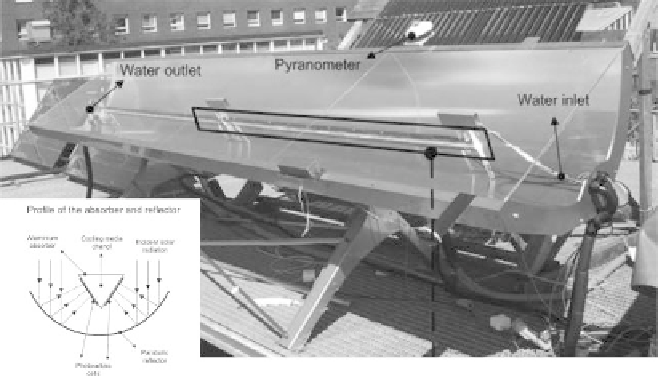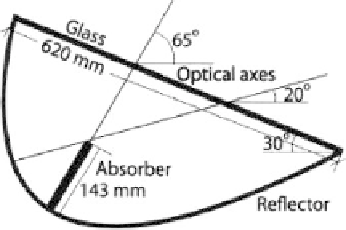Environmental Engineering Reference
In-Depth Information
Figure 17.2.11
Parabolic trough PVT concentrator. Experimental installation in Sweden and schematic
of the PVT module (Bernardo et al., 2011).
Figure 17.2.12
Section of the stand-alone MaReCo for Stockholm conditions (aperture tilt 30
◦
; optical
axes 20
◦
and 65
◦
defined from the horizon) (Adsten et al., 2005).
improving the system, many authors have opted for incorporation of bi-facial cells
(Bowden et al., 1993; Mayregger et al., 1995; Ortabasi, 1997; Hernandez et al., 2000;
Libra and Poulek, 2004; Weber et al., 2006; Parada et al., 1991). These double the
amount of radiation or concentration that can be realized at the PV receiver. However,
their use is not possible in high concentration systems as they have no un-illuminated
surface onto which the essential heat dissipator may be attached. Designs of static
concentration systems (with a typical acceptance angle of 30
◦
) are normally intended
for use with bifacial cells. Their concentration factor may be increased by use of a
dielectric (Winston et al., 2005).
In terms of the asymmetric compound parabolic concentrators, Figure 17.2.12
illustrates an asymmetric CPC known as “Maximum Reflector Collector'' (MaReCo).
This system was characterized experimentally for high-latitude bi-facial cell BIPV
applications (Adsten, 2002) and different MaReCo configurations were developed


Search WWH ::

Custom Search